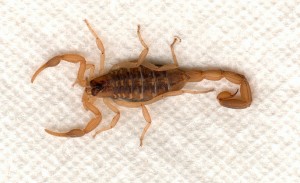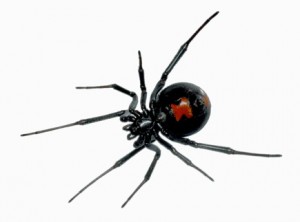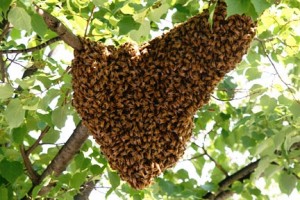Manic: The number of Facebook posts that I noticed the last few weeks that talked about the unwelcome visitors that have arrived with the Spring season. It seems like everyday I’m reading about scorpion sightings, worries about bee stings, black widows and more. Speaking of those three pests, in the 8 years that we have lived in our home, we have dealt with all three all these types. Not fun!
Managed: Accepting a guest post from Jim LaBrie, pest expert and owner of Bug & Weed Mart, a do-it-yourself retail store that specializes in bug and weed prevention. He has some great recommendations about what to do in our homes to help prevent visits and stings from these very unwelcome creatures. He first describes the different types of bugs and their stings and then he provides some great prevention recommendations, so be sure to check this out…
Jim says:
Scorpions, Spiders, Mosquitos, Oh My!
Living where the average annual temperature is 84.5, means Valley of the Sun residents enjoy a lot of outdoor time. It also means sharing our home with a number of potentially dangerous bugs. While some are certainly more dangerous than others, it is important to be aware and to know what you can do to protect your house and children from these precarious pests.
Scorpions
The most well-known desert dweller to send fear down our spines is the scorpion. While it is true that a scorpion sting can be dangerous, it is the common Bark Scorpion that is most dangerous to very young children and infants and those over 80.  Unfortunately, the Bark Scorpion is also very agile and can crawl up smooth walls and under ceilings.
Unfortunately, the Bark Scorpion is also very agile and can crawl up smooth walls and under ceilings.
Spiders
 As spiders go, the Black Widow has the most potent venom of any spider on earth, but they fortunately have very little of it. A bite from a Black Widow would be most dangerous to a child three years-old and younger. The more dangerous spider is the Brown Recluse, which is not native to Arizona, but finds its way here in shipments. A sting from a Brown Recluse can cause the skin to die and untreated may result in the loss of a limb.
As spiders go, the Black Widow has the most potent venom of any spider on earth, but they fortunately have very little of it. A bite from a Black Widow would be most dangerous to a child three years-old and younger. The more dangerous spider is the Brown Recluse, which is not native to Arizona, but finds its way here in shipments. A sting from a Brown Recluse can cause the skin to die and untreated may result in the loss of a limb.
Bees
Unless you have an allergy, a single bee sting is of little concern and can be easily treated. The real danger is when they swarm and spring in Arizona is bee swarm season.  If confronted with a swarm of bees, don’t freeze; keep moving, get indoors as soon as possible and don’t try to take cover in water—bees will wait for you!
If confronted with a swarm of bees, don’t freeze; keep moving, get indoors as soon as possible and don’t try to take cover in water—bees will wait for you!
Mosquitos
Ten years ago mosquitos in Arizona were scarce, but today our state is considered a hot bed for the West Nile Virus. Symptoms for West Nile Virus includes fever, headache, and body aches, nausea, vomiting, and sometimes swollen lymph glands or a skin rash on the chest, stomach and back. Fortunately only one to three percent of people with WNV will develop a serious disease, according to the Maricopa Environmental Services, however, it’s still important to be aware of these potentially dangerous pests.
Bug Off
The best way to protect your kids from potential harm is by reducing the opportunities for pests to make your home theirs.
1. Clear out the clutter
Keep areas clean around the perimeter of your home. Remove dried leaves and shrubbery, where bugs love to hide and multiply. Sweep under patio furniture, and remove spider webs under eaves and around doors. Stack wood piles off the ground to eliminate the opportunity for scorpions and spiders to hide and nest.
2. Keep things dry
Repair leaky faucets, always empty your kiddie pool, remove any stagnant water and be sure fountains are in working order and running to keep water moving. As little as two ounces of water can become a breeding ground for hundreds of mosquito. If you have a backwash pit for your pool this can also be a hot spot for scorpions and spiders to nest and breed.
3. Be proactive about prevention
There are a variety of products available for you to safely use around the perimeter of your home and yard that will keep pest away. Granules can be sprinkled as little as four times a year and soaked into the ground with the hose so it can sink in and kill larvae. If you find your yard infiltrated with bees, use Pro Zap, and they will usually leave within one to two days. There are also sprays you can use around your door ways, windows and your garage that will help eliminate crickets, which are a big source of food for spiders and scorpions. Lastly, when you or your children are outside during dawn or dusk, use a bug spray like Deet to keep yourself safe.
About our guest writer:
Jim LaBrie is a father, a grandfather and the owner of Bug & Weed Mart, a do-it-yourself retail store that specializes in bug and weed prevention, with five location. To learn more about pest prevention and protection you can visit www.bugweedmart.com or on the Bug & Weed Mart Facebook page.






